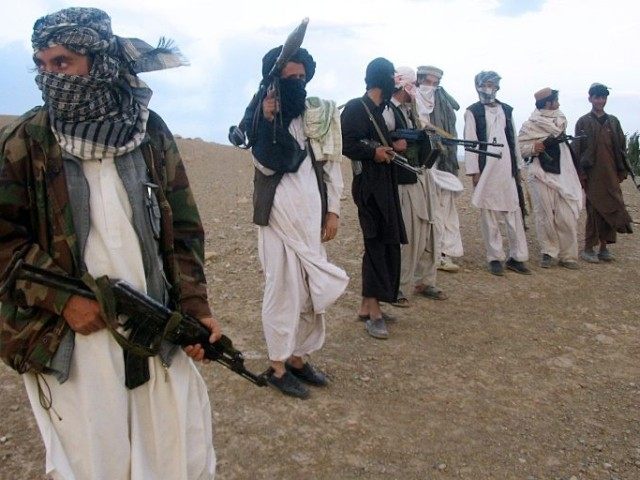The expanded military authorization granted by President Barack Obama last month, which allows American troops supporting their Afghan counterparts to offensively target the Taliban rather than waiting for the terrorist group to attack first, is leading to progress on the battlefield, the top U.S. commander in Afghanistan told USA Today.
In a recent interview with the newspaper at the American Bagram Air Base, U.S. Gen. John Nicholson, the commander of American and NATO forces in Afghanistan, indicated the new authorities have “led to more aggressive targeting of insurgent leaders by U.S. and Afghan forces and helped Afghan’s military shift to an offensive mindset.”
“We’re able to target critical nodes in the enemy organization and take out leaders and this has a significant impact,” the general told USA Today on Sunday, warning that there was no “silver bullet” to defeat the Taliban.
His comments appear to mark the first signs of progress against the terrorist group since Obama changed the rules of engagement (ROEs) in 2014, taking away the U.S. military’s authority to offensively attack the Afghan Taliban.
The changes came as the president ended the American combat mission in Afghanistan, Gen. John Campbell, Nicholson’s predecessor, told lawmakers in February.
On June 12, Gen. Nicholson told reporters in the Afghan capital of Kabul that the former rules allowed the U.S. military to respond to threats in “a defensive, reactive kind of manner.”
“Now, with the new authorities that we have now, as of June, we’re able to then provide combat enablers to assist the Afghans who are now… taking the initiative against the enemy… so it’s more of an offensive nature to that operation that we’re assisting,” he added.
U.S. Secretary Ash Carter said the changes make “very good sense.”
He explained:
Whereas previously, he [Nicholson] waiting until a situation had developed in which the Afghan forces really needed our enabling support. Now, he’s able to look ahead and see how the things are going on the battlefield and what the enemy’s intentions are, where the enemy’s massing and so forth and anticipate their movement rather than waiting until things turn into a situation in which our enabling support is much needed; try to head them off. That makes perfect common sense… this is a smarter way for us to give them [Afghans] that [military] help.”
Afghan security forces and civilians suffered a record number of casualties after the ROEs were altered.
Moreover, Taliban jihadists had replaced their Islamic State (ISIS/ISIL) rivals as the world’s chief perpetrators of terrorist attacks (1,093) by the end of 2015 — within nearly a year of the rule changes — according to the U.S. State Department.
While the U.S. military was permitted to offensively attack jihadists from al-Qaeda and the local Islamic State branch, the ROEs dealing with the Taliban were different.
American forces were only able to attack the Taliban from a defensive position: when U.S. or allied troops, including Afghan partners, were under a direct threat and when U.S. officials believed the Taliban was providing direct support to its al-Qaeda allies.
However, President Obama expanded the U.S. military’s authority last month, allowing the American troops to strengthen Afghan offensives with American “combat advisers, airstrikes, surveillance aircraft and pilots to fly alongside the fledgling Afghan air force,” explained USA Today in late June.
According to the newspaper, the changes also provided Gen. Nicholson with the sole authority to order the new missions.
The new rules of engagement have made the Afghan National Defense and Security Forces (ANDSF) more confident, declared the commander.
“We’re seeing a shift in mindset,” Nicholson told USA Today. “They see the value of going on the offensive.”
USA Today quotes the top U.S. general as indicating that “Afghan military leaders have told him their forces were more reactive last year, but they are now taking initiative in the fight against the Taliban and other insurgents, in part because of the expanded authority.”
Despite more than a decade of U.S. training and nearly $70 billion in American taxpayer funds invested in its development, the ANDSF, which includes police and army units, remains incapable of taking on Afghanistan’s enemies on its own.
Early this month, President Barack Obama announced that he plans to keep 8,400 troops in Afghanistan going into 2017 as he acknowledged that, after more than 14 years of war, “the security situation in Afghanistan remains precarious.”
The president initially intended to reduce the U.S. military presence to 5,500 by the end of this year, from approximately 9,800 there now.

COMMENTS
Please let us know if you're having issues with commenting.